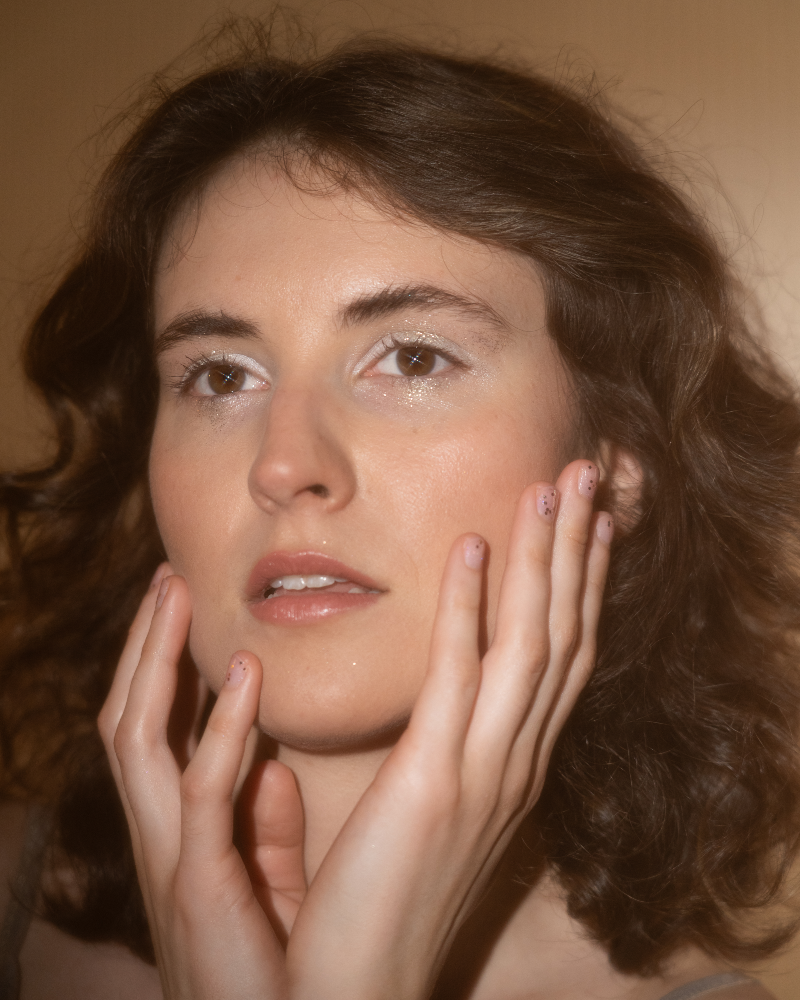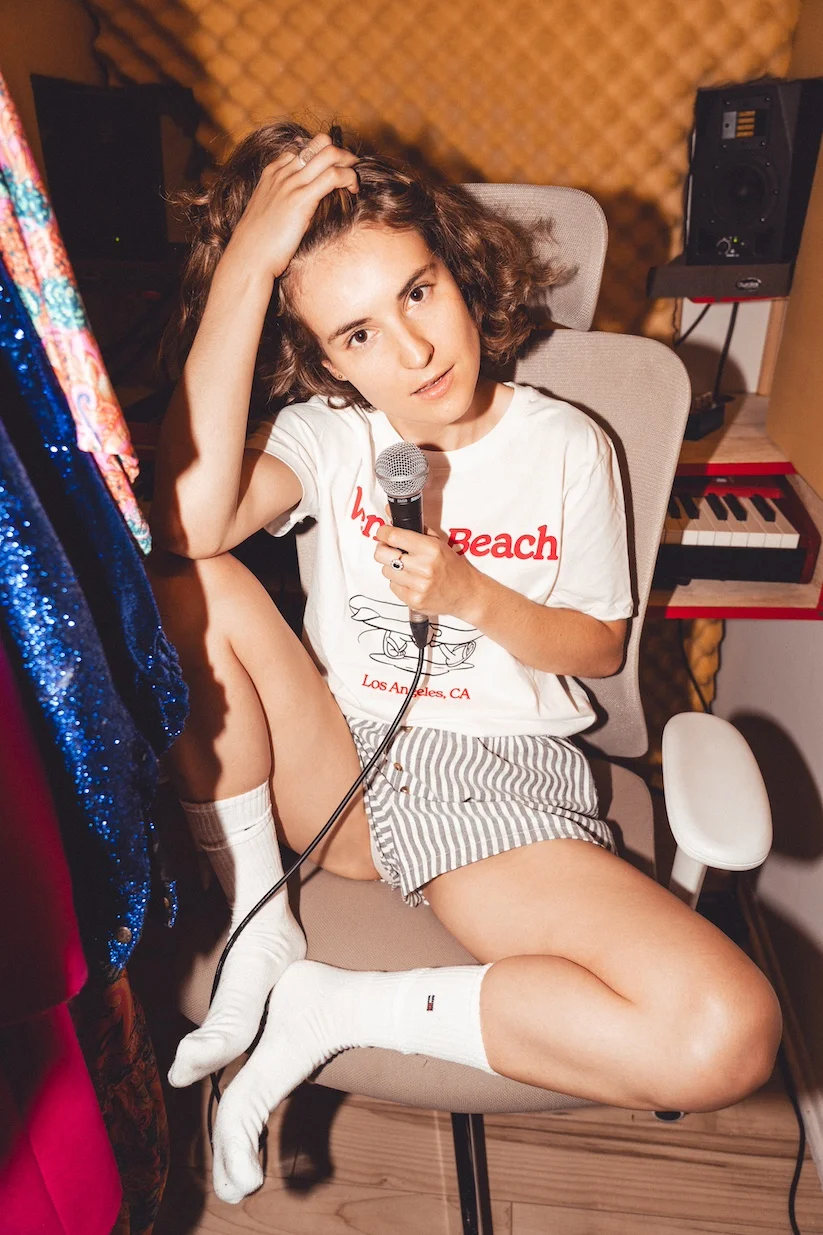Nina Anto • August 5, 2024
Producing a song in a closet -
Take a song from initial recording to final mix using three major digital audio workstations (DAWs).
Utilizing my skills as a composer, music producer and professionally trained pianist and vocalist, the sound production including mixing for my latest single remained in my hands. I’m dissecting my single Show Me Your Scars here. Mostly, songs are produced using a single DAW (digital audio workstation). However, I used a mix of three leading DAWs (and most of this I made in my closet).
Nina Anto - Show Me Your Scars (feat. Danny Clvrk) (Official Lyric Video)

Nina Anto
Nina is a composer, music producer, singer, and pianist with a stellar education from CalArts and Bimm London. As an indie musician, Nina Anto looks into human despair. In composing her songs, she searches for the consciousness of the issues of our generation.
Producing a song in a closet
Of course every song starts from a place of inspiration. A creative spark, if you will. For me, it often comes from exploring complex relationships and a strong desire to find authenticity in people. The lyrics come from diving deeper into my deep feelings or a situation that led to that desire.
Coming from an extremely rigorous professional training as a pianist from an early age, my main rule when creating songs now is to do it from a place of comfort and ease, and to make the process as enjoyable for myself as possible. This is how I came to record my voice and produce the song in the comfort of my small closet at home. I still go to the studio to record the grand piano. One, because the piano does not fit in my closet, duh. And secondly, I was strictly trained that the piano is deserving only of the most professional studios. Yet in the studio, I find it is an art in itself to find the microphone placements to record in and around the piano that will shape the piano's sounds - and it is my dream to find a way to be able to record my home piano.
Using digital audio workstations (DAW)
I produced my song using three leading DAW: Logic Pro X, Ableton Live, and Pro Tools.
I started by recording a demo track in Logic Pro X (in my closet), so I could record parts having something in my ears instead of just a metronome (we call this a guide track or a demo track). Then I went to a professional studio where I recorded a grand piano and comped the recorded files with Pro Tools, a software most professional studios in Los Angeles use - it’s the industry standard. However, Pro Tools, is a new DAW for me, I just started with it about a year ago, and it’s hard to make it work with the newest MacBook which I use, the one with the M chip - it’s been crashing on them. So my introduction to this DAW was bumpy.
With the Ableton 12 Suite I feel it’s the easiest to work with when it comes to creating a rhythm section, I especially love the possibility to work with Drum Rack there. So I was creating beats in Ableton, based on the tempo and mood I first established in a demo track with Logic. Then I added more sounds in Ableton that I recorded myself. I moved my session into Logic Pro X and added the grand piano recording to my demo beat. I find Logic to be the best tool for writing arrangements and creating my own sound palette. This is what music production is to me - to create my own sonic universe. This means thinking about the sounds I want to use and then building this palette. For my latest single Show Me Your Scars I was really happy to use Native Instruments - KONTAKT 7 that provided me with sounds I was just imagining.
The mastering and string arrangements were lovingly done by my dear friend Damian Pietrasik, a blind musician whose connection to sound is extremely strong, as it is the primary force that guides him through the world. He's an exceptional musician, arranger and engineer, and thanks to software like Reaper - a 4th DAW I'm mentioning here - he's able to work smoothly, Reaper is his favorite DAW. Also, thanks to Komplete Kontrol introduced by Native Instruments together with a keyboard MK2 he is able to compose, produce and arrange professionally, as Komplete Kontrol has features that support people with visual impairments (unfortunately, MK3 version does not yet).

The mic that I'm holding I use only when creating demo track or performing, I would suggest using a condenser mic for recordings
Photos by Holy Smoke (Alissa Wyle)
Which DAW serves best for which process
But let me give you an overview of the music DAW (Digital Audio Workstation) I used, and how you can mix all of them in your creative practice as a professional, amateur or aspiring musician to best serve you -
Ableton is the best for me to build beats, but also to test creative ideas. Moreover it’s easy to find ‘creative sparks’ in a big sample library, and effects that can make your sounds unique. It fully enables you to create your own sound design, as it is effortless to add effects, and that makes it easy to create new sounds, and with so many audio and MIDI effects it is still straightforward to use.
Ableton's “Live" mode is really useful for testing out new ideas or deciding on a song structure, as you can just jam around and see what structure works best. It is also great for live performances, as you can easily trigger samples to suit your stage setting and performance.
Pro Tools is by far less user-friendly (in my opinion) than Ableton and Logic, yet it is worth mastering as it enables you to record high-quality audio and provides you with flexibility in audio routing. So, Pro Tools is the top choice for recordings, editing audio thanks to its precision.
It is designed with a console recording in mind, which serves as a base when working in different music studios and it’s an industry standard.
It is also great for mixing music as it provides clarity and works with hi-end plugins.
Logic Pro is my top choice for writing arrangement, and best to serve a linear thinking process. I mostly love using it when writing music that’s not grid based (it’s “a tempo” or the rhythm is speeding up or slowing down). It’s also my go-to DAW when working as a producer, when creating sonic identities, sound logos, jingles, songs and sounds for campaigns, ads, and trailers. Logic Pro makes it easy to write music for a moving image, especially for short forms, and it’s easy to load and browse plug-ins.
Logic also gives you the most room for initial artistic expression - even though you have a lot of pre-existing loops and features in Logic, they are not "in your face". I usually treat my Logic session as a blank canvas on which I draw my own ideas, whereas in Ableton there is more of a temptation to use some of the pre-existing musical elements.
So, whether you are a creative technology expert looking for some inspiration to get insights from another producer’s workflow, or a musician who wants to become more independent by being able to produce your own songs, I hope my insights will give you some ideas on how to move forward in your own sonic universe productions.
Listen to Show Me Your Scars on Spotify
Subscribe to our growthhacking newsletter.
Follow the latest PR hacks from our experts.